Decorated squeaker - Synodontis decorus
Scientific name: Synodontis decorus
Common name: Decorated squeaker
Family: Mochokidae
Usual size in fish tanks: 20 - 30 cm (7.87 - 11.81 inch)
014
Recommended pH range: 6.6 - 7.5
Recommended water hardness: 4 - 20°N (71.43 - 357.14ppm)
0°C 32°F30°C 86°F
Recommended temperature range: 24 - 27 °C (75.2 - 80.6°F)
The way how these fish reproduce: Spawning
Where the species comes from: Africa
Temperament to its own species: peaceful
Temperament toward other fish species: aggressive to smaller
Usual place in the tank: Bottom levels
Short description
The Decorated squeaker (Synodontis decorus) is one of the most striking Synodontis species, instantly recognized by its long trailing dorsal filament and spotted body pattern. Native to the turbulent waters of the Congo River, it is a hardy but large catfish that requires space, strong filtration, and multiple caves. Peaceful toward similarly sized tank mates but capable of eating very small fish.
Origin
Africa – endemic to the Lower and Middle Congo River Basin (Democratic Republic of the Congo). Inhabits fast-flowing, oxygen-rich waters with rocky bottoms.
Food and feeding
An omnivorous benthic scavenger. Provide a staple of sinking catfish pellets or tablets, supplemented with frozen/live foods such as bloodworms, brine shrimp, blackworms, and krill. Also accepts quality flakes, blanched vegetables, and spirulina wafers. Feed mainly at dusk and evening, when activity peaks.
Sexing
External sexing is unreliable. Mature females are typically plumper-bodied, while venting is the only accurate method.
Breeding
As of now, there are no documented cases of Synodontis decorus breeding in standard aquaria. They are believed to be egg scatterers in the wild, releasing eggs among rocks and substrate during seasonal floods. Commercial reproduction has occasionally been reported with hormonal induction.
Lifespan
Usually lives 10–15 years in aquaria with good care, sometimes longer. The older 5–8 year estimate is conservative.
Behavior & compatibility
S. decorus is generally peaceful toward similar-sized species, but may prey on fish small enough to swallow. It will hold its own even against larger cichlids. Avoid aggressive fin-nippers (such as some barbs) that might target its long dorsal filament. Best kept either singly or in larger tanks with plenty of caves if keeping multiple Synodontis.
Tank requirements
- Tank size: 300 L for a single specimen; larger for multiple.
- Aquascape: sand/rounded gravel, rock piles, driftwood, large pipes or caves.
- Water: pH 6.6–7.5; soft to moderately hard; temperature 24–27 °C.
- Filtration & flow: strong filtration, well-oxygenated water, moderate to strong flow.
- Lighting: subdued or shaded areas to reduce stress.
Care notes
Known as a “squeaker” because of the audible noises produced by its pectoral spines. Handle with care—the spines can easily snag nets. Use a plastic container rather than a soft net when moving.
Pictures
Bought by aqua-fish.net from jjphoto.dk.
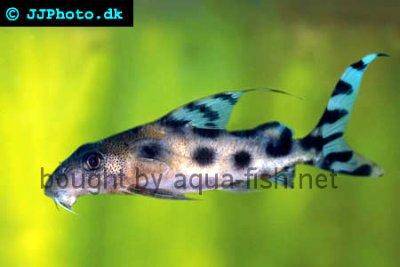




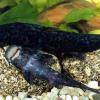 Euchilichthys
Euchilichthys 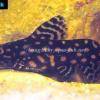 Angel
Angel 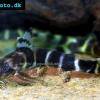 Brichard’s
Brichard’s 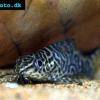 Featherfin
Featherfin 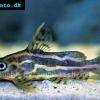 Orangestriped
Orangestriped 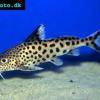 Cuckoo
Cuckoo 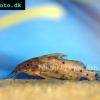 Lace
Lace 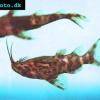 Upside-down
Upside-down 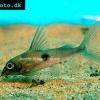 One
One 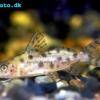 Ocellated
Ocellated 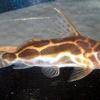 Robert’s
Robert’s